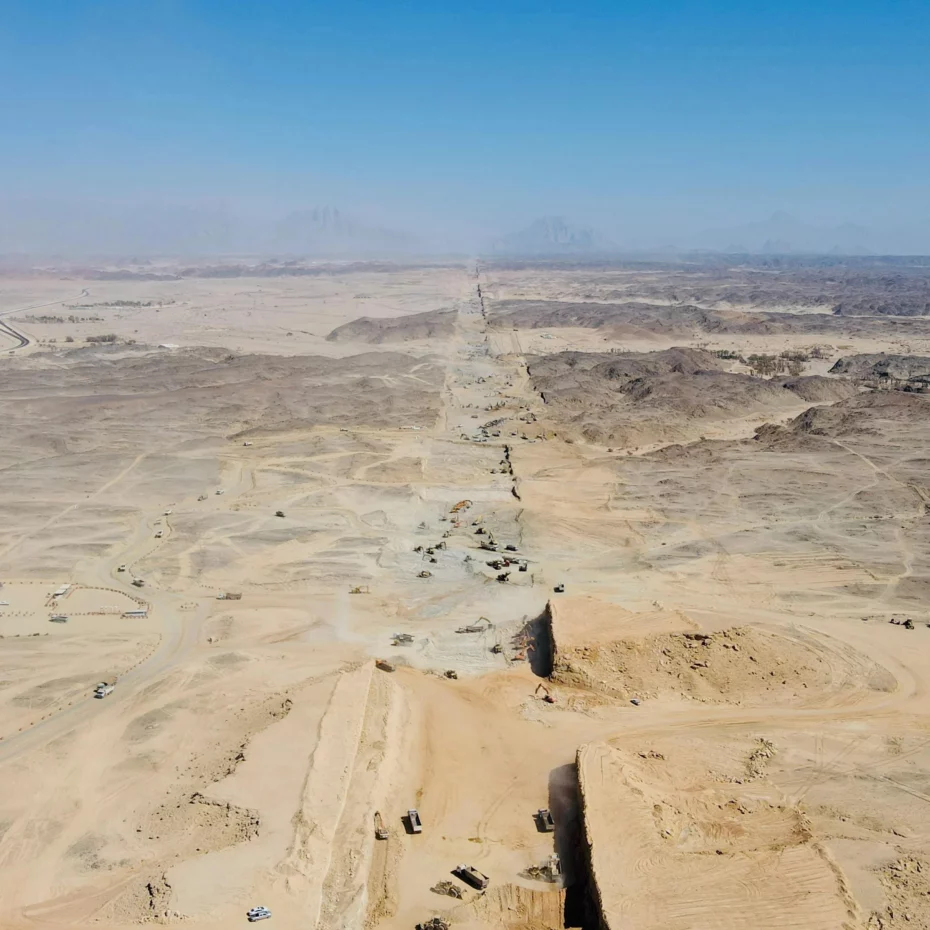
The opportunity to design and build an entire city from scratch sounds like the dream of every child (and child at heart) in possession of a Lego set and an imagination, and this is exactly what NEOM, the team behind The Line, a new sci-fi city currently underway in Saudi Arabia and set to be revealed in 2030, have been given. In the words of NEOM’s manifesto, The Line, a one-building ‘mirrored architectural masterpiece’ is ‘the future of urban living’; a 170 kilometre long (yes, really), 200 meter wide and a massive 500 meter tall construction stretching from the Red Sea across the desert. With a goal to accommodate a whopping 9 million residents, NEOM goes on to proclaim that it ‘redefines the concept of urban development and what cities of the future will look like’.
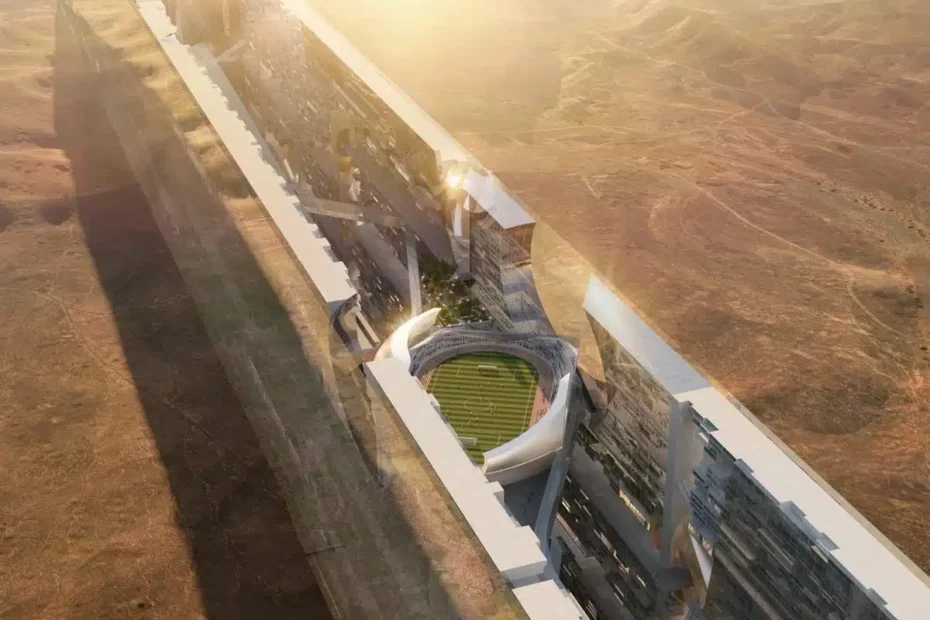
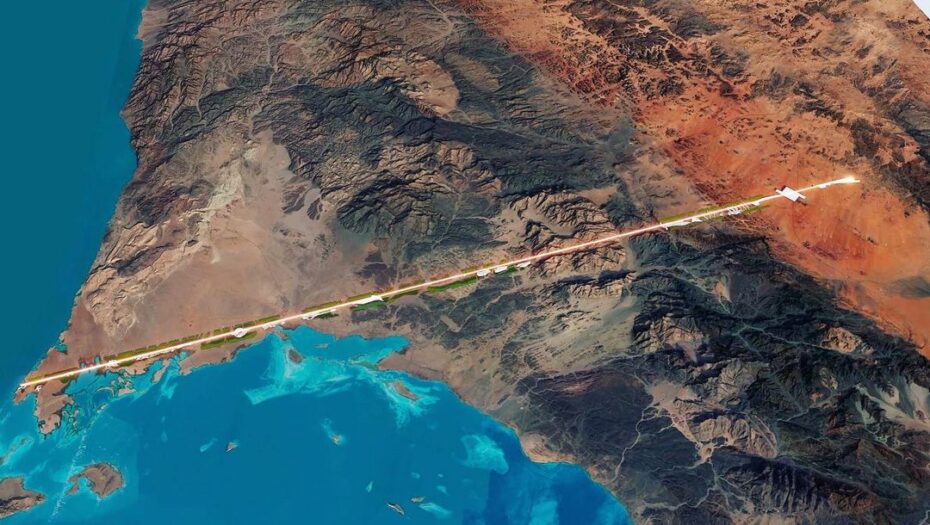
Indeed the proposal, the first stage of which has already begun, is impressive: the facade will be entirely mirrored, reflecting and ‘blending into’ the desert it will span, while inside, it will run on zero carbon, one hundred percent renewable energy, with ninety-five percent of the land preserved for nature. There will be no cars or roads (and therefore no emissions) and instead, a high-speed train named “the Backbone|, with an end-to-end time of 20 minutes that will transport residents and visitors through the city.
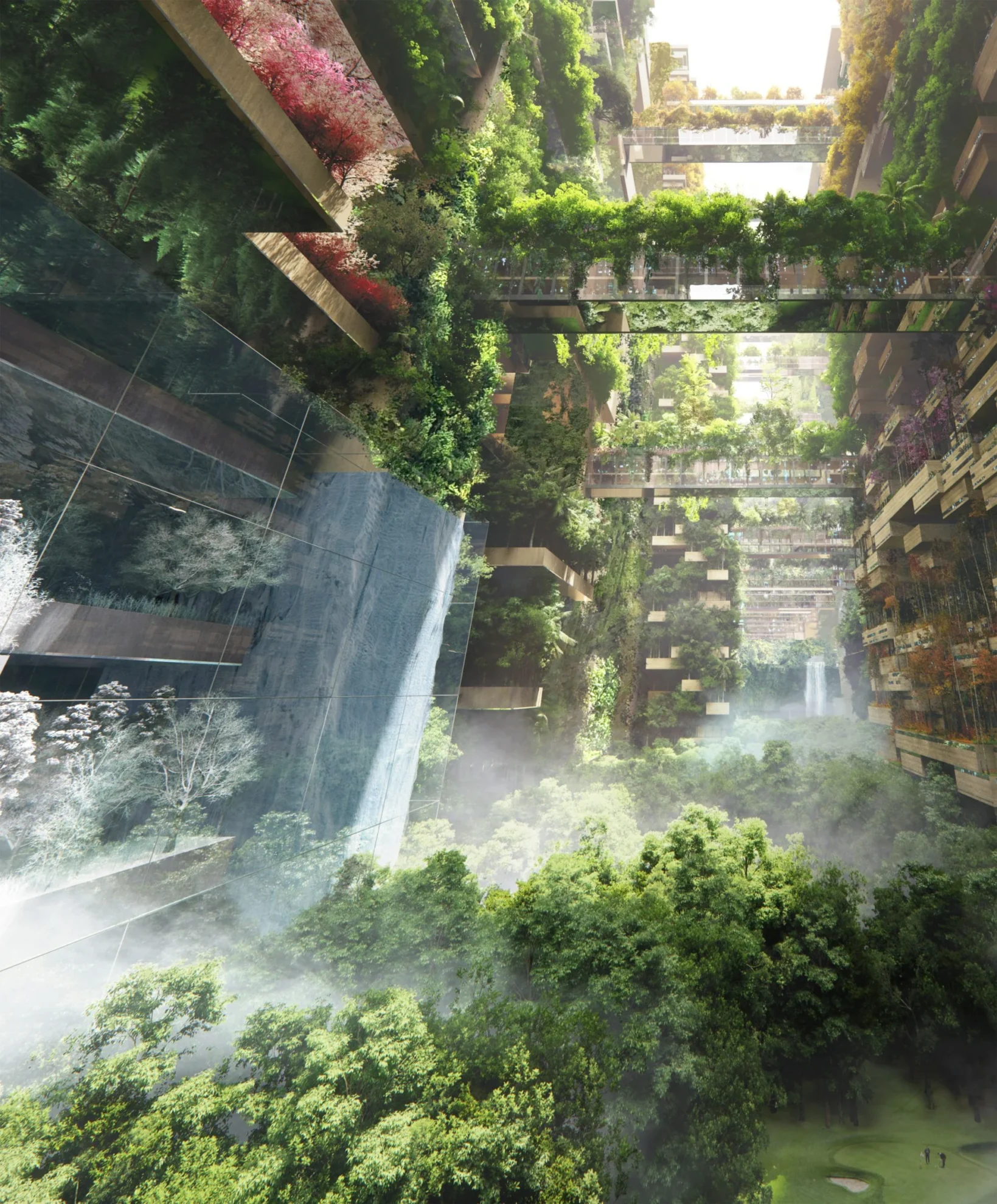
NEOM says that health and wellbeing are prioritised, so every inhabitant will have their essential amenities, including schools and doctors, within a 5 minute walking distance, as well as immediate and ‘uninterrupted access to nature’ within a 2 minute walk through ‘diverse open spaces’, ‘pristine views’ and ‘multiple levels’. In his press release, HRH Crown Prince of Saudi Arabia and Chairman of the NEOM Board of Directors, explained further:
“The idea of layering city functions vertically while giving people the possibility of moving seamlessly in three dimensions (up, down or across) to access them is a concept referred to as Zero Gravity Urbanism. Different from just tall buildings, this concept layers public parks and pedestrian areas, schools, homes and places for work, so that one can move effortlessly to reach all daily needs.”
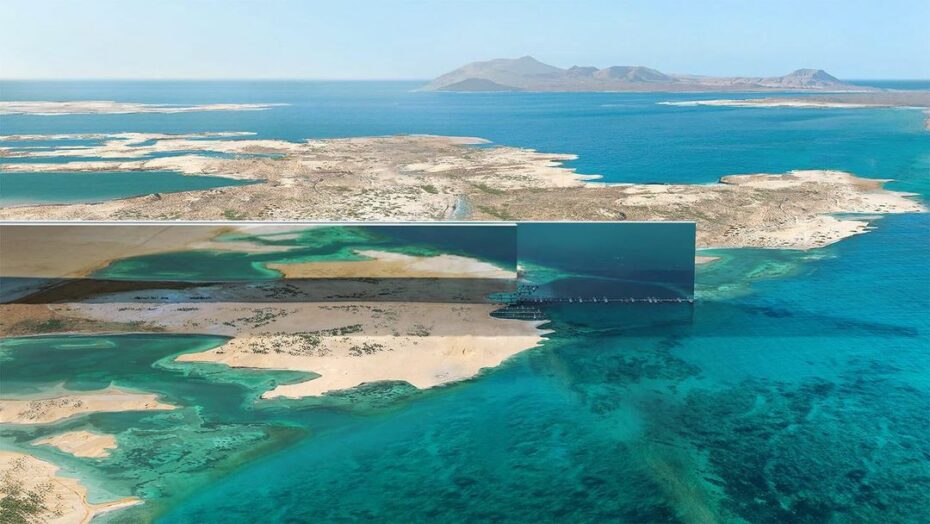
Not only will the design and construction of this metropolis be ‘completely digitized’ utilising advanced technologies, but so will the lifestyle of those living there. With everything running on AI, occupants will supposedly have ‘more time to spend with loved ones’. NEOM goes as far as predicting that The Line will be “where the best and brightest live. A place of unparalleled social and economic experimentation without pollution and traffic – coupled with world-class preventative healthcare, so people will live longer”, leading to “an ecosystem of incubation and proliferation of ideas and inspiration”. Big claims indeed.
So, who are these ‘best and brightest’ and where will they come from to relocate to this city spanning one of the hottest and most barren landscapes in the world? According to Executive Director Giles Pendleton:
‘The project will have a very strong technology, biomedical and educational focus – so if you would naturally end up in the ecosystems at MIT, Silicon Valley or Stanford, for instance, then The Line is going to appeal to you as a honeypot city.’
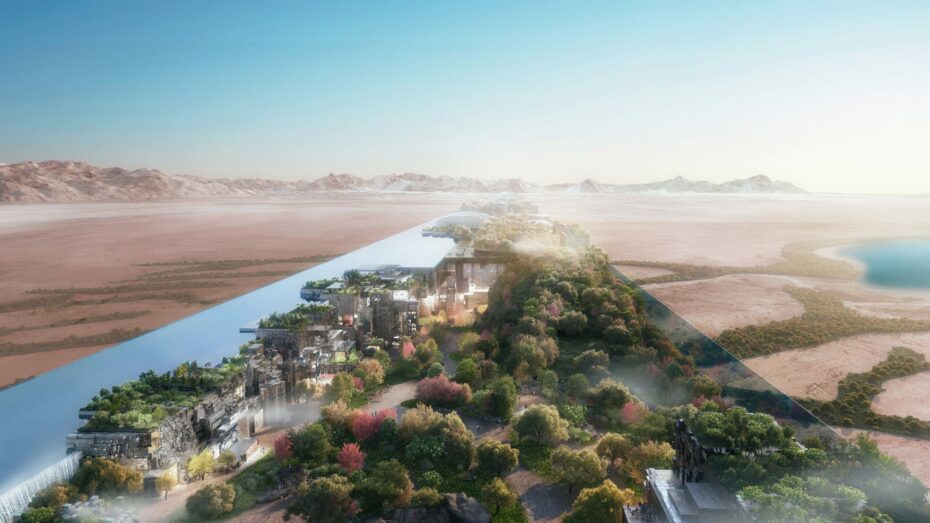
Will members of the LGBTQ community be welcome as residents? Saudi Arabia’s Sharia-based code still criminalizes same-sex sexual activity and transgender expression, and although not applied recently, the law still provides maximum death penalties. While the Gulf state recently claimed that it welcomes LGBTQ tourists and visitors, many LGBTQ Saudis are regularly forced into exile.
According to one engineering publication, Design and Development Today, ‘What some consider an ideal ecological city, others call a promotional gimmick’. Quoting researchers from the Complexity Science Hub in Vienna, who have been studying the logistics of the city, The Line should “definitely not be a blueprint for future cities”. The CSH crunched numbers regarding mobility, population density and richness of culture, and found all three lacking. They worked out that a size-population calculation “translates to a population density of 265,000 people per square kilometer – ten times denser than Manhattan”, and despite NEOM’s assurance that communities will exist within walking distance of each other and everything they could desire or need, the CSH claim otherwise:
“If we randomly pick two people in The Line, they are, on average 57 kilometers apart. In Johannesburg, which is 50 times larger in area, two random people are only 33 kilometers apart. Assuming a walking distance of one kilometer, only 1.2% of the population is within walking distance from each other. This hinders active mobility, so people will depend on public transport.”
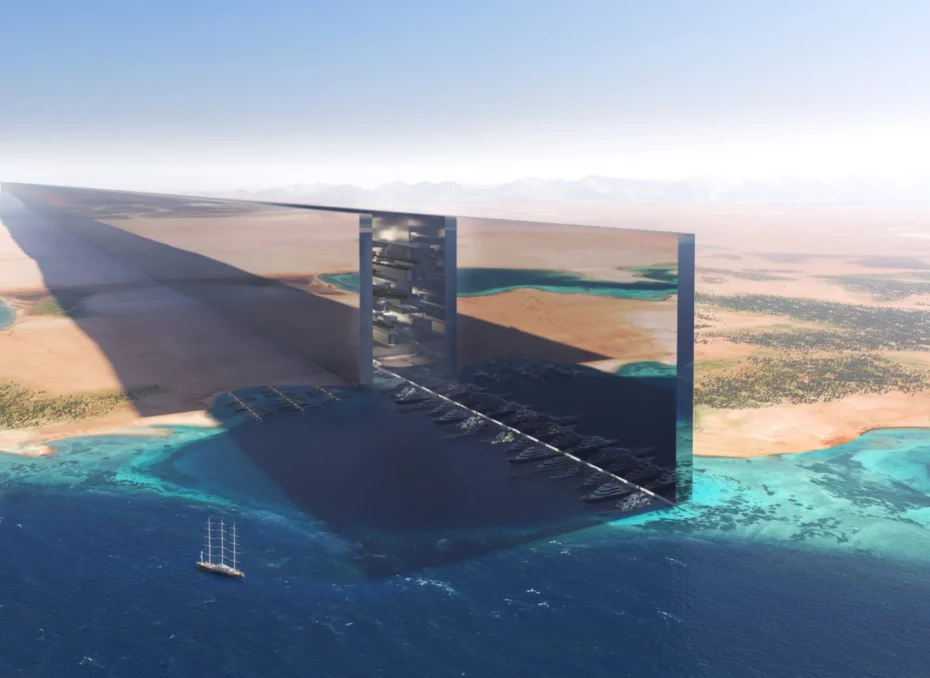
This leads to the question of transporting all these people, by rail, along a 170km stretch, and again, the CSH says it’s not looking good. Their mathematicians state that for everyone to be within walking distance of a station, there would need to be at least 86 stations, and anyone who’s traveled on a local train, stopping every three minutes or so, knows how impossible it is to reach high speeds. On average, the CSH estimate 60-minute journeys, three times longer than NEOM’s prediction. Rafeal Prieto-Curiel, who worked on the project, has vocalised what we are all thinking:
“A line is the least efficient possible shape of a city[…..]There’s a reason why humanity has 50,000 cities, and all of them are somehow round”.
Apparently, The Circle would be a far better proposition.
But how comfortable will the 9 million residents be, living in a city where everything ‘runs on artificial intelligence’? According to the tech blog, Engadget, “The Line is expected to be loaded with countless sensors, cameras, and facial recognition technology that, in such a confined space, could push government surveillance to almost unthinkable levels.”
And what about NEOM’s carbon neutral promise? According to Philip Oldfield of the University of New South Wales, the carbon footprint of constructing The Line, with its imposing skyscrapers, will be huge, “producing around 1.8 gigatonnes of CO2 equivalent in glass, steel, and concrete”. He added that the city “would create a large-scale barrier to adjacent ecosystems and migratory species”. Again, reality seems to fall short of the dream, and once we consider the cost and the question of who is footing the bill (between 200 million and a trillion USD depending upon the source) and the working conditions for those actually doing the construction, not to mention the displacement of the native Howeitat tribe in order to build upon their home, this eco-topia is looking more and more like a moral dystopia.
The very idea of building an entire city from scratch also has its critics. As one CSH researcher Daniel Kondor explains, “Cities are more than a collection of semi-isolated 15 minute neighborhoods located next to each other”. Arguably. the richness of cities like Paris, Marrakesh or London, for example, comes not from everything being technologically brilliant, pristine and new, but from those interwoven layers of history and culture that have been knittted into their fabric over hundreds, if not thousands, of years. It is the idiosyncrasies, the mishmash of diverse communities or the mavericks who have spawned bohemian districts, each with their own pockets of architecture, character and quirks that breathe vibrancy into a place. One hopes to be proved wrong and that The Line will prosper and form a unique personality in a similar way that Dubai is evolving, now housing Al Quoz, its own creative bohemian district.